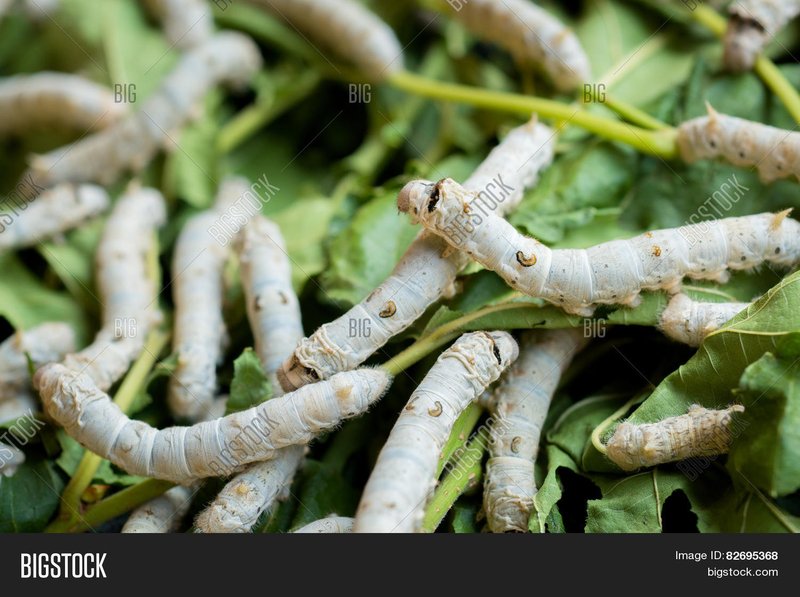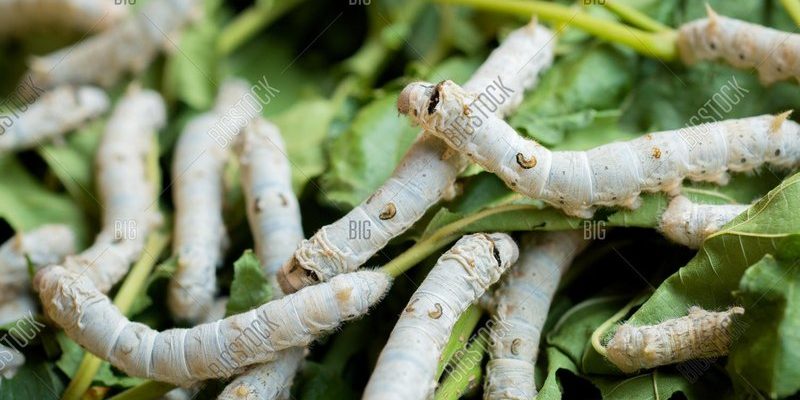
Maintaining a clean environment for silkworms isn’t just about aesthetics; it’s crucial for their health. Factors like temperature, humidity, and cleanliness all play a role in ensuring these little guys develop properly. Whether you’re a newbie or have some experience in sericulture, keeping your silkworms in a clean environment is a game-changer. Let’s dive into how to create and maintain that perfect setting for your silkworms.
Why Cleanliness Matters for Silkworm Health
Think of silkworms as tiny, sensitive creatures that can easily become overwhelmed by dirt or disease. Just like you wouldn’t want to eat food off a dirty plate, silkworms don’t want to live in an unkempt area. Cleanliness helps prevent diseases and parasites, which can seriously disrupt their growth and productivity.
A clean environment promotes healthy feeding habits, too. Silkworms primarily munch on mulberry leaves, but if their space is cluttered or contaminated, they might refuse to eat. You want them to thrive, and ensuring a neat habitat is a key step. By keeping their living area clean, you’re also enabling a strong foundation for silk production, leading to better quality fibers.
Cleaning isn’t just a one-time task; it’s an ongoing routine. Just like you wouldn’t clean your kitchen only once a year, your silkworms need regular attention to keep their environment fresh and safe.
Setting Up the Ideal Silkworm Habitat
The first step in maintaining a clean environment is setting up their habitat properly. Silkworms typically thrive in small, enclosed spaces like plastic containers or wooden trays. Here’s how to set it up:
- Containers: Use containers with good ventilation to prevent humidity build-up. You can use mesh lids to allow airflow while keeping pests out.
- Placement: Choose a location that is cool and dry, away from direct sunlight, which can cause temperature fluctuations.
- Bedding: Start with clean, dry bedding like newspaper or paper towels. This will absorb moisture and make cleaning easier down the line.
Once you’ve set up their space, you’ll find it easier to keep everything clean. Making sure they have the right environment will also make them less susceptible to illnesses.
Daily Cleaning Routines
Now that you’ve got their space set up, it’s time to talk about daily cleaning routines. Yes, daily! You might be wondering, “What’s involved in cleaning a silkworm habitat?” Well, keeping things tidy doesn’t have to be overwhelming. Here are some simple steps to follow:
- Remove waste: Each day, check for leftover food and droppings. Removing these not only keeps the area clean but also helps prevent mold and bacteria growth.
- Change bedding: If the bedding looks damp or dirty, replace it with fresh material to keep the environment dry and hygienic.
- Inspect for pests: Keep an eye out for any unwanted visitors like mites or flies. Catching them early can save you a lot of trouble.
Remember, a little daily effort goes a long way. It’s like making your bed every morning; it sets a positive tone for the day and keeps things in order.
Weekly and Monthly Maintenance
While daily maintenance is crucial, you’ll also want to think about weekly and monthly tasks to keep everything running smoothly. This is where you can dive a little deeper into cleaning practices. Here’s a quick overview:
Weekly Tasks:
- Thoroughly scrub the containers with a mild soap solution. Rinse well to avoid any soap residue.
- Change out the bedding completely, replacing it with fresh material. This helps prevent any lingering odors or bacteria.
Monthly Tasks:
- Inspect the entire habitat for any signs of wear and tear. Make repairs as needed to maintain a safe environment.
- Wash all utensils and feeding tools with warm, soapy water to prevent contamination.
These tasks might seem tedious, but think of them as essential check-ups for your silkworms. Keeping their space in top condition will pay off in healthier, happier critters.
The Role of Temperature and Humidity
Temperature and humidity play a significant role in the health of your silkworms. You might be wondering how these factors tie into cleanliness. Well, a clean environment can help regulate these elements better. Here’s a breakdown:
- Temperature: Silkworms thrive in temperatures between 65°F and 80°F (18°C to 27°C). If it gets too hot or too cold, their activity levels drop and they can become stressed.
- Humidity: Aim for 60-70% humidity. If it’s too high, it can lead to mold growth; too low, and they can become dehydrated.
Using a hygrometer can help you monitor these conditions effectively. Making sure the environment is stable can reduce the risk of disease, which is where cleanliness comes in.
Identifying Signs of Health Issues
No matter how clean you keep your silkworms’ space, sometimes health issues can arise. Being vigilant about their behavior and appearance can help you catch problems early. Here’s what to look out for:
- Inactive or lethargic behavior: If your silkworms are moving less than usual, it could indicate stress or illness.
- Discoloration: Healthy silkworms are usually a creamy white. If you notice any unusual colors, it might be a sign of disease.
- Webbing texture: Check the silk they produce. If it’s inconsistent or poor quality, their health might be compromised.
If you spot any of these signs, take a closer look. Sometimes, a little extra cleaning or environmental adjustment can make all the difference.
Maintaining clean environments for silkworm health is more than just a chore; it’s a commitment to nurturing these fascinating creatures. From setting up the perfect habitat to establishing daily cleaning routines, every step you take contributes to their overall well-being.
By investing time into keeping their space clean, you’re not only enhancing their health but also improving the quality of the silk they produce. Plus, it can be quite rewarding to see your silkworms flourish in a tidy environment. So, roll up those sleeves and enjoy the process. Happy silk farming!

